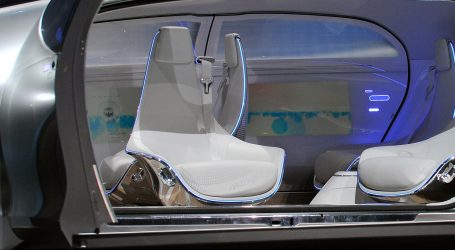How Drones Will Impact the Future?

Drones, also called unmanned aerial vehicles or UAV, made their first recorded appearance in 1849 when Austria attacked Venice using unmanned balloons filled with explosives. Recently, there’s a growing public interest in the use of drones thanks to George Lucas utilizing them to keep the paparazzi away during the filming of Star Wars VIII.
The move might seem over the top but it also gives a glimpse of what drones can do and how they can be used. In the near future, it won’t be a surprise to see these machines taking the place of a pizza delivery boy or being used in search and rescue missions where they provide vantage points that any human being cannot do.
It won’t be long before it becomes normal to see drones hovering our heads and doing any business they have been programmed to do. In fact, Amazon has announced its vision of using drones called “octocopters” which will supposedly deliver an item within 15 minutes after ordering it online. Now that is something we can all do with.
While the idea is still in the research process in Amazon’s timeline, a drone has made history by delivering 10 pounds of medical supplies from Virginia to a remote clinic in just 3 minutes. This particular drone was a collaboration between Virginia Tech, NASA, and an Australian startup, Flirtey.
Facebook and Google are also joining in the drone development race. Last year, Google tested one in New Mexico. Unfortunately, the machine ended up crashing down but it did not hamper Google’s desire to continue with the project. In fact, it is also developing its own drone-powered delivery service called Project Wing, which will rival Amazon’s Prime Air.
Similarly, Facebook launched its solar-powered drone Aquila which is able to fly for three months without landing and provide Internet access even to the remotest parts of the world. The Aquila, which has the same wingspan as the Boeing 737, will use laser beam technology to send Internet signals.
“Our mission is to connect everybody in the world. This is going to be a great opportunity for us to motivate the industry to move faster on this technology,” says Jay Parikh, Facebook’s vice president of engineering.
Aside from these tech giants, other companies are following suit as they see the potential of these flying machines in enhancing their businesses and the services they offer. The U.S Federal Aviation Administration (FAA) predicts that there will be exponential growth in the drone industry as new technology sees more opportunity how to utilize the drones.
Dan Kara, practice director of robotics at a technology consultancy called ABI Research, said that the technology is still very young and as it continues to grow, “the potential is limitless.”
Drones in Modern Warfare
While the future looks bright in the commercial and communication industries, there’s a somewhat dark and scary side to them – the use of drones in modern warfare.
In a paper called “The Consequences of Drone Proliferation: Separating Fact from Fiction,” the authors argued that as more and more countries utilize drones in their military, it will definitely change how counter-insurgency and warfare will be done in the future.
The paper continues that although drones are still “vulnerable to air defense systems,” there is a great possibility that it will get better, especially in stealth technology. What happens then?
The study pointed out that “China is currently pursuing the development of a stealth drone, reportedly named the Sharp Sword, and it has already undergone initial flight testing. The Sharp Sword would not only have a larger weapons bay than China’s CH-4 or Wing Loong, it would also have low observability characteristics that could make it harder for Western radars to detect.”
On the other hand, the US is developing a drone, the X-47B, which has similar features as the Sharp Sword. Moreover, the US Air Force is collaborating with DARPA to develop drone swarms which are deadly but cheap. When this happens, the way how wars are fought between nations will drastically change.
Reforms in Regulation
The FAA has made some regulatory reforms regarding the production and use of drones. Although it’s far from what is expected, removing the limitation for military purposes is already great progress.
The regulation specifies that “drones up to 55 lbs. would be able to fly up to 100 mph, up to an altitude of 500 feet.”
This has given engineers a clear set of standard to guide them in design and creation. On one hand, investors will also have a clearer picture what kind of product they’re going to get when they invest in it




